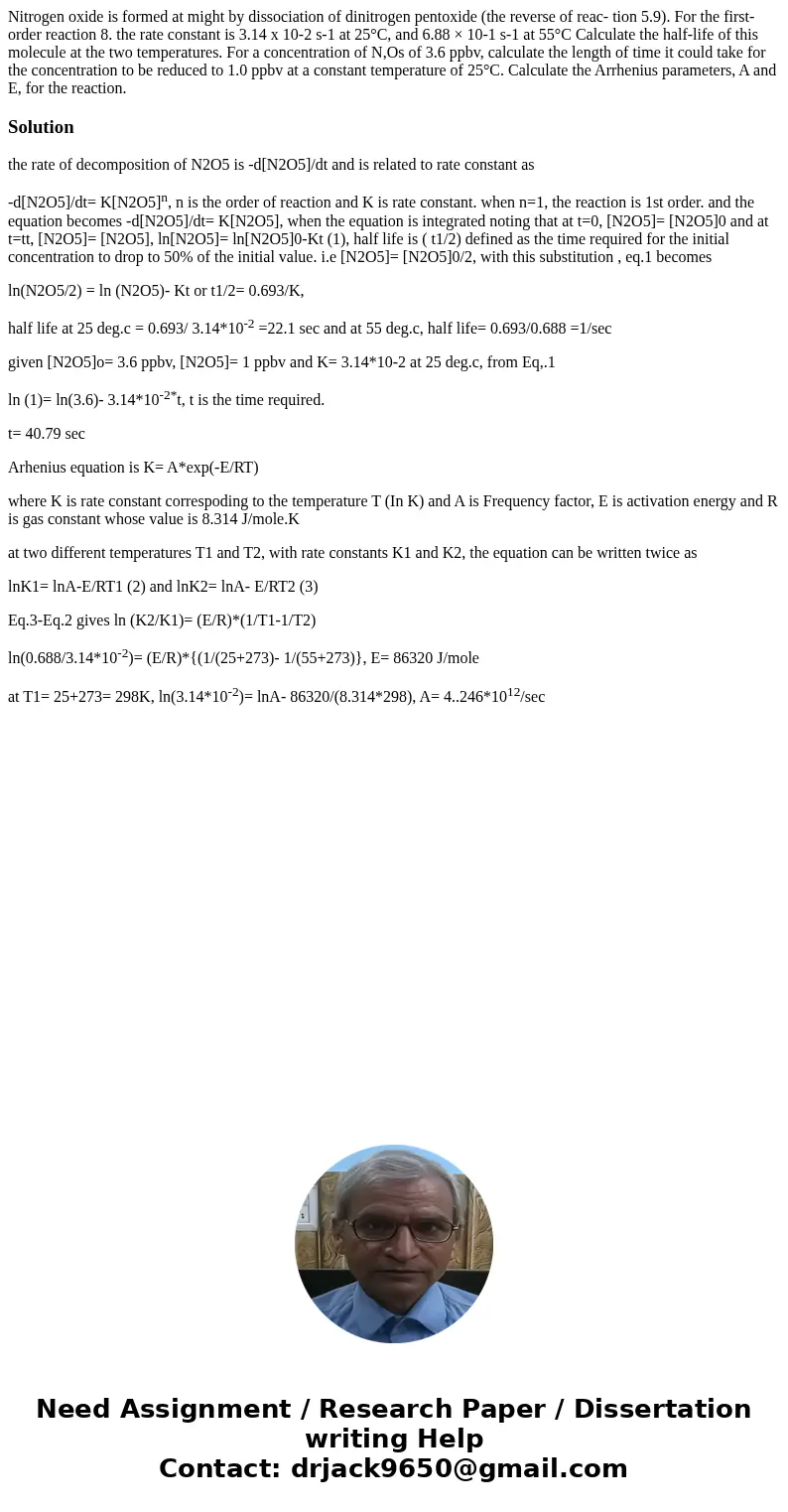Nitrogen oxide is formed at might by dissociation of dinitro
Solution
the rate of decomposition of N2O5 is -d[N2O5]/dt and is related to rate constant as
-d[N2O5]/dt= K[N2O5]n, n is the order of reaction and K is rate constant. when n=1, the reaction is 1st order. and the equation becomes -d[N2O5]/dt= K[N2O5], when the equation is integrated noting that at t=0, [N2O5]= [N2O5]0 and at t=tt, [N2O5]= [N2O5], ln[N2O5]= ln[N2O5]0-Kt (1), half life is ( t1/2) defined as the time required for the initial concentration to drop to 50% of the initial value. i.e [N2O5]= [N2O5]0/2, with this substitution , eq.1 becomes
ln(N2O5/2) = ln (N2O5)- Kt or t1/2= 0.693/K,
half life at 25 deg.c = 0.693/ 3.14*10-2 =22.1 sec and at 55 deg.c, half life= 0.693/0.688 =1/sec
given [N2O5]o= 3.6 ppbv, [N2O5]= 1 ppbv and K= 3.14*10-2 at 25 deg.c, from Eq,.1
ln (1)= ln(3.6)- 3.14*10-2*t, t is the time required.
t= 40.79 sec
Arhenius equation is K= A*exp(-E/RT)
where K is rate constant correspoding to the temperature T (In K) and A is Frequency factor, E is activation energy and R is gas constant whose value is 8.314 J/mole.K
at two different temperatures T1 and T2, with rate constants K1 and K2, the equation can be written twice as
lnK1= lnA-E/RT1 (2) and lnK2= lnA- E/RT2 (3)
Eq.3-Eq.2 gives ln (K2/K1)= (E/R)*(1/T1-1/T2)
ln(0.688/3.14*10-2)= (E/R)*{(1/(25+273)- 1/(55+273)}, E= 86320 J/mole
at T1= 25+273= 298K, ln(3.14*10-2)= lnA- 86320/(8.314*298), A= 4..246*1012/sec

 Homework Sourse
Homework Sourse